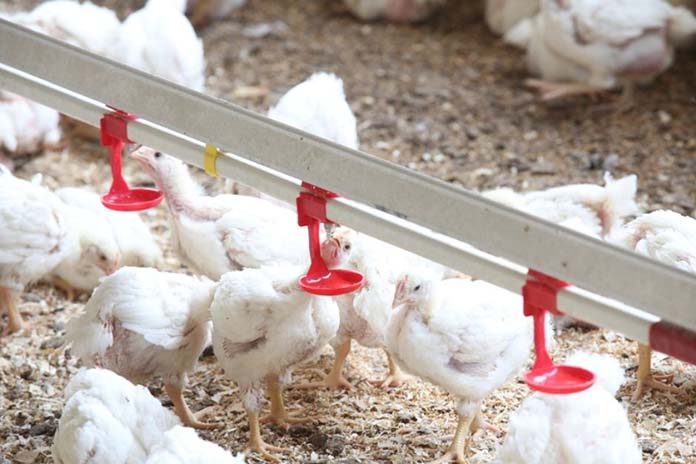
Low protein (LP) diets have clear benefits for the poultry industry with regards to health, welfare and production. Dean et al., (2006) found that supplementing LP diets with glycine (Gly) and essential amino acids (AAs) can maintain performance similar to that seen on a standard protein (SP) diet. Further research into this concept proposes that Supplementation of Gly precursors such as threonine (Thr) and serine (Ser) can overcome Gly deficiency in low protein diets.
Enzymes enabling these conversions include threonine dehydrogenase (TDH) and glycine C-acetyltransferase (GLYA), which convert Thr to Gly, and serine hydroxymethyltransferase (SHMT) which is responsible for the interconversion of Ser and Gly.
The aim of this study was therefore to investigate the regulation of these enzymes under different concentrations of Gly, Ser and Thr in LP diets. Eight dietary treatments were investigated that included a SP diet (227 g/kg crude protein (CP)) and seven LP diets (196 g/kg CP) with Gly, Ser or Thr supplemented at two levels (156 and 180 g/kg Gly equivalence). Dayold off-sex male Ross 308 chicks (n = 528) were fed a common starter diet ad libitum containing wheat, sorghum, soybean meal and meat and bone meal from d 0 to 7 and grower treatments until d 21. On d 7, chicks of were allocated into 48 pens of equal weight, resulting in six replicate pens per treatment of 11 chicks.
Essential AAs were supplemented when considered limiting using AMINOChick®2.0 software. Due to their involvement in Gly synthesis and degradation, the expression of mRNA for genes encoding hepatic enzymes; TDH, GLYA, SHMT, glycine decarboxylase (GDC) and xanthine dehydrogenase (XDH) was determined in liver tissues on d 21 by real-time quantitative PCR. The geNorm module in qBase+ software was employed to determine the two most stable genes; glyceraldehyde 3- phosphate dehydrogenase and tyrosine 3-monooxygenase, (Hellemans et al., 2007) to normalise the hepatic target genes. The output data were subjected to one-way ANOVA with LSD test at the level of P<0.05 using SPSS statistics version 22. Reducing CP by 30 g/kg downregulated mRNA expression of TDH, GLYA, and XDH in the liver (P<0.05). GDC mRNA showed a tendency (P = 0.054) for downregulation by low protein treatments, however, no difference was seen between the low protein treatment with 180 g/kg Gly and the SP treatment, indicating that the dietary Gly level was adequate at this age. No differential expression of SHMT was seen between treatments.
The increase in dietary Thr did not affect the expression of TDH or GLYA. Higher dietary Thr (17.5 g/kg) upregulated the expression of XDH (P = 0.032), suggesting an increase in nitrogen excretion. Reducing CP by 30 g/kg reduced the expression of enzymes involved in Thr metabolism, regardless of dietary Thr level. Expression of SHMT was not effected by dietary CP but was downregulated with Ser supplementation.
Due to a reduction of hepatic enzyme expression in low protein diets, in vivo reactions theoretically cannot meet Gly requirements when supplementing with the precursors Ser and Thr.
References
Dean D, Bidner T & Southern L (2006) Poult. Sci. 86: 288-296.
Hellemans J, Mortier G, De Paepe A, Speleman F & Vandesompele J (2007) Genome Biol. 8: R19.
From the Proceedings of the 2019 Australian Poultry Science Symposium

















